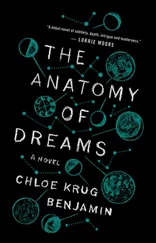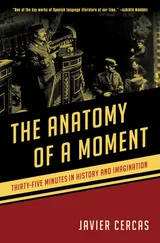Our new house in Madison was a rental on East Main Street, in a neighborhood called Atwood. It was a historically blue-collar district that had undergone a sort of half gentrification: the old porn house had been converted into a theater that showed art films, and there was a little chocolatier between Trinity Lutheran Church and St. Bernard Catholic Church. But there were also wide lots penned in by wire and filled with low warehouses, or nothing at all. Madison is known for the two lakes that bracket its isthmus, and Atwood felt like an island, hemmed in by bodies of water.
The house was square, painted a faded, wheaty yellow, with a steeply triangular roof; the previous tenants had left a couch on the front porch. The house’s combination of shabbiness and sweetness was typical of Madison. Unless you went to the west side, where the university professors lived, or to Maple Bluff, the governor’s neighborhood, most of the apartments looked a little cobwebby. Inside our place, the wooden floors were faded and the kitchen drawers jammed. The refrigerator door routinely got suctioned stuck, opening only when I braced one foot against the freezer and yanked with all of my strength. The brass doorknocker had rusted to the color of tea, and the light fixtures — beautiful fixtures, made of decorative metal and glass — swung precariously on their cords.
In Fort Bragg, we had lived in a garden apartment — half underground, that is — that Keller paid for, subtracting it out of what he owed us for our work. Our place in Madison was huge in comparison. Upstairs was the bedroom, the bathroom, and, above that, an attic. On the bottom level were the living room, the kitchen, and the office. Gabe preferred to work on campus, so the office became mine: a room with large windows and a domed ceiling. I loved the clarity of its shape, the sense of being tucked away in an egg, and when I left it in the evenings, dazed from work, I felt like a hatchling, vulnerable and disoriented.
There was one other house on our block, separated by our two driveways and patchy lawns. Structurally, it was almost identical to ours, but it had been painted violet with pink trim. The porch was strung with multicolored lights and hung with wind chimes I could hear from the office. And for most of August, that noise, along with the two recliners on the porch, was the only evidence that people actually lived there. Most of the bright, floral drapes were drawn, but the curtains on the upstairs window had fluttered open, and I could see the edge of a bedside table, a salmon-colored pillow.
I was eager for the sight of other people because our house was so secluded. It sat in the center of a nearly barren block: to the right was the neighbor’s house, and to the left were freight-train tracks, which were clearly the reason for our affordable rent. We were separated from the tracks by a chain-link fence, four feet high and overrun with wild greenery: messy, verdant trees keeled over them from each side. The trains came most often after dark, making low bellowing noises that kept us awake. It was almost a blessing that so much of our work with Keller took place at night.
Usually, we went to the lab around seven, a couple of hours before the participant went to sleep. It was our job to explain the procedure, soothe them — you’d be amazed how many seemed to treat the experiments like therapy — bring them water, if they asked for it, but no food. Often, the anxious ones asked for Gabe instead of me. I was more businesslike, explaining the procedure matter-of-factly, but Gabe didn’t talk about the study. Instead, he got the participants to talk about their children, their partners, their ailing parents. Once they fell asleep, I monitored the polysomnogram in an adjoining room while Gabe stayed next to the bed, watching closely for signs of movement or speech and intervening as necessary.
On days when we didn’t have a procedure scheduled, we worked at the university sleep clinic with Keller, where our tasks were more routine. Some of the higher-ups at the clinic knew about our project, which had been commissioned by the Center for Neuroscience, but most of them didn’t. They didn’t seem to find our caginess odd — it wasn’t uncommon for researchers to keep their work close to their chests — but I can see now that it prevented us from feeling at home in the university community. The department’s interest in Keller’s work had been a surprise: his research was so experimental that getting mainstream validation was always an uphill battle, and we felt like we were working on borrowed time.
We worked in the lab about four nights a week, and on those days we slept from the time we got home until early afternoon. We had brought our eclipse curtains with us from Fort Bragg, made of a tightly woven fabric that blocked light completely. It was part of our work to be interested in dreams, and we always listened intently to each other’s stories — not that I had many. I was rarely able to remember them; no matter how vivid my dreams felt at the time, they slipped through my hands in the morning. All I had was a faint sense of space and emotional residue that lingered, like a bad taste in the mouth. Gabe dreamed, most often, of transportation: helicopters and planes, commuter trains, and ships that crossed vast bodies of water with impossible speed.
When he told me about them, he looked not at me but at the ceiling, or out the window to the neighbor’s house, an arm bent behind his neck. He was my height, five feet seven, and by then he was stocky and muscular, with a head that almost looked to be too large for his body. With me, his face softened: his mouth untensing, the wide-set brown eyes, which narrowed when we worked, becoming gentler and more open. Other women seemed to find him attractive, though I suspected that had less to do with the way he looked than with his confidence. He was decisive and convincing in speech, but he could also drop into a low tone of intimacy that was, for Keller’s participants especially, profoundly comforting.
We worked in the old neuroscience building, a mile away from the quad of undergraduate classrooms and dorms near State Street. It was a flat, drab structure the color of brown eggs. Most neuroscience operations had transferred to a newly constructed, multistory building closer to the heart of campus, but this one still housed experiments, and Keller had a five-room complex in its north wing. Only one of the rooms had windows, so the wing felt like a collection of cells.
A petite, red-haired woman and an older Hungarian man conducted experiments in other parts of the building. I never knew exactly what they did, but I always stopped and made small talk when I saw them. In fact, I was rarely the one to end a conversation with anybody; I became so friendly with two of the checkout men at our local grocery co-op that Gabe accused me of flirting. I denied it at the time, but perhaps I was — flirting not with them, but with the idea of another life. We kept such irregular hours that neither of us had much opportunity to develop outside friendships.
This was the way our lives went for that first month of August — muggy, static days filled with fatigue and the little caffeine pills Gabe bought online — so I would probably have been grateful for any shift in our routine. It just happened that the shift came in the form of Thomas and Janna.
I remember the evening they arrived because there was a terrible thunderstorm, the kind I learned was common during Midwest summers. The rain was warm and steady, but the sounds were violent: great, piercing cracks, the taut sky shot open. Thunder like this used to terrify Bo, my family’s dog; I had always talked in my sleep, and my brother told me I often comforted Bo in that state. I was packing dinner for the lab with Gabe, thinking about Bo cowering in the closet, when we heard the garage door open next door.
Читать дальше












